Mersin is a wonderful city in Turkey, home to various interesting bird species. The city is located in the Mediterranean region, and the climate is ideal for many birds living there.
A wide variety of birds can be found in Mersin, from birds of prey to songbirds. Bird watchers worldwide come to Mersin to experience the great diversity of bird life.
From the majestic golden eagle to the colorful hoopoe, there is something for every bird lover.
Mersin is also home to many migratory birds, making it a great bird-watching destination. With so many bird species to enjoy, Mersin is an amazing place to explore.
12 Birds Found in Mersin
Mersin, located in the Mediterranean region of Turkey, boasts diverse habitats, including coastal areas, wetlands, forests, and agricultural lands. This variety of ecosystems supports a rich avian diversity. Here’s a list of 12 bird species you might encounter in the Mersin area:
1. Little Egret
The Little Egret is a small heron species found in the Ardeidae family. It is a majestic white bird with a long, slender black beak and long black legs. In the western race, the Little Egret also has yellow feet.
As an aquatic bird, it has a varied diet and can feed on land and in shallow water. It consumes a variety of small creatures, such as fish, amphibians, crustaceans, insects, and occasionally small reptiles.
It is known to be a graceful and versatile hunter, often standing motionless in the water before quickly snatching its prey with its beak. The Little Egret is an important part of the food chain and helps maintain the ecosystem’s balance.
| Kingdom | Animalia |
| Phylum | Chordata |
| Class | Aves |
| Order | Pelecaniformes |
| Family | Ardeidae |
| Genus | Egretta |
| Species | E. garzetta |
2. Rock Pigeon
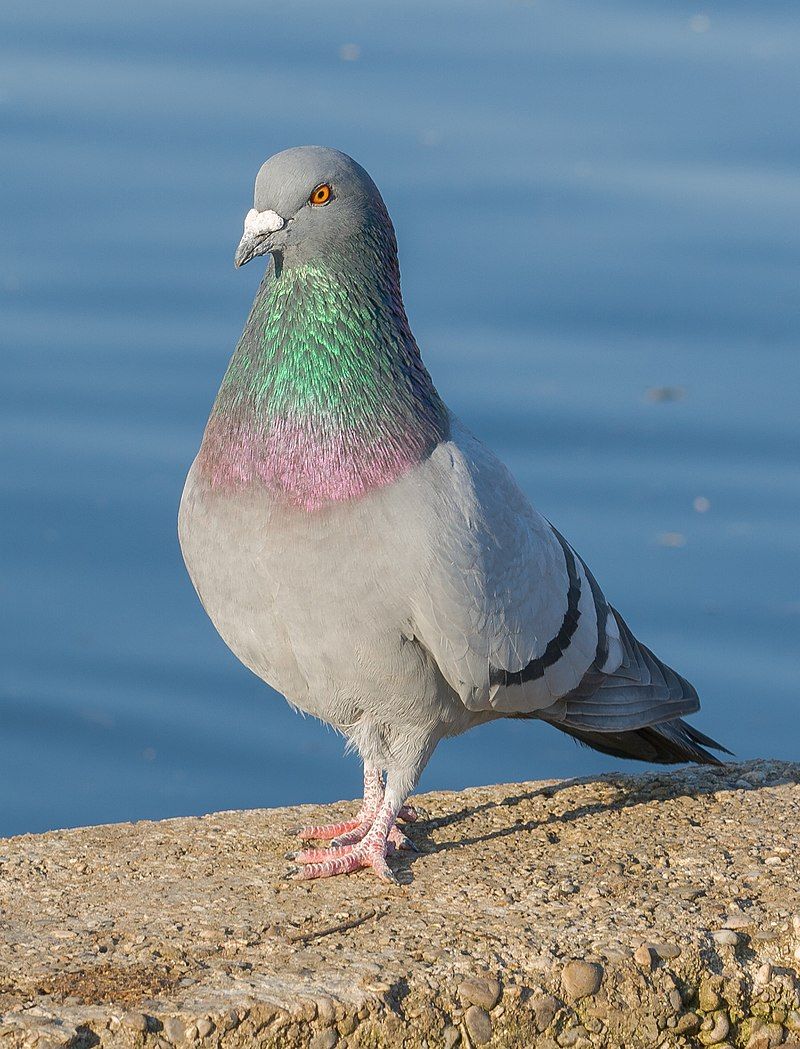
The rock dove, rock pigeon, or common pigeon is a species of bird belonging to the Columbidae family. It is widely known and referred to as the ‘pigeon’ and is most commonly seen in cities.
The domestic pigeon is descended from this species and is highly domesticated.
However, some domestic pigeons have escaped captivity, which has led to an increase in the number of feral pigeons worldwide. Feral pigeons have returned to their natural state and live in the wild.
They are found in many cities and urban areas as they have adapted well to the human environment, taking advantage of food sources and shelter provided by people.
| Kingdom | Animalia |
| Phylum | Chordata |
| Class | Aves |
| Order | Columbiformes |
| Family | Columbidae |
| Genus | Columba |
| Species | C. livia |
3. Laughing Dove
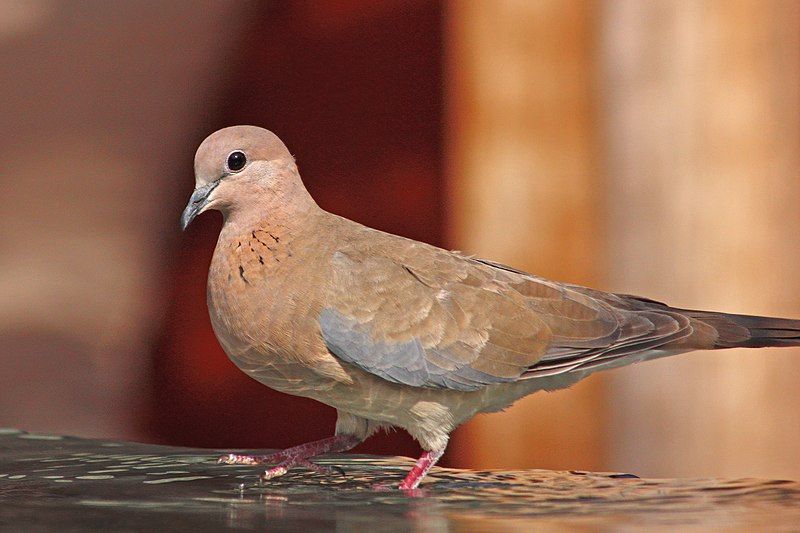
The laughing dove (Spilopelia senegalensis) is a species of small pigeon found in various habitats across Africa, the Middle East, South Asia, and Western Australia.
This small, slim bird has a gray body with a pink breast, and its name is derived from its distinctive call, which is a low, murmuring “coo-doo-doo.”
The laughing dove is mainly a resident breeder, meaning it typically lives and breeds in the same area throughout the year.
It is found in various habitats, including grasslands, scrub, and open woodlands, and often visits gardens and cultivated fields.
It feeds on seeds, grains, and insects, and its diet is supplemented with various fruits and berries.In Western Australia, the laughing dove established itself in the wild after being released from Perth Zoo in 1898.
It has become a common sight in the suburbs, especially along the Swan River, where it is often seen in large flocks.
The species is also found in other parts of Western Australia, such as the Kimberley region and the Pilbara Coast. The laughing dove is a common species, and its population is believed to be increasing.
It is classified as a species of Least Concern by the International Union for Conservation of Nature (IUCN) due to its wide distribution and large population.
| Kingdom | Animalia |
| Phylum | Chordata |
| Class | Aves |
| Order | Columbiformes |
| Family | Columbidae |
| Genus | Spilopelia |
| Species | S. senegalensis |
4. Red-Crested Pochard
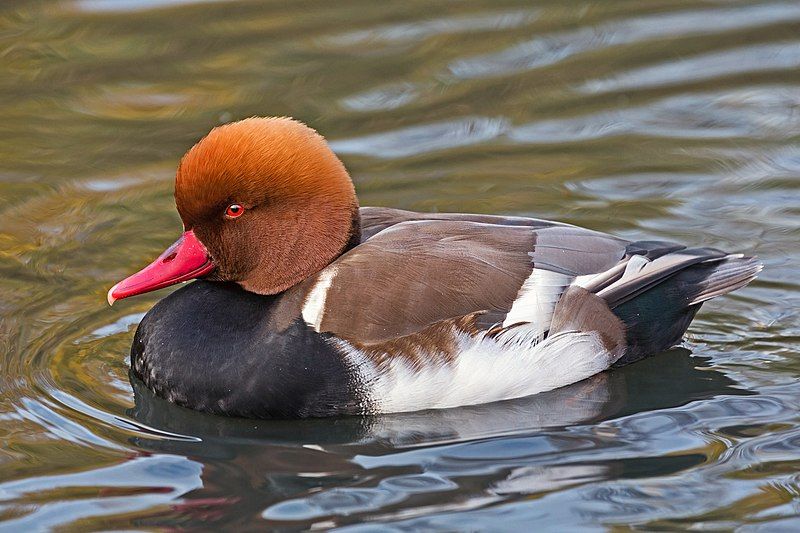
The red-crested pochard is a large diving duck found in various parts of the world. It is known for its characteristic red crest, which stands out against its brown body.
The scientific name of this species is derived from the Greek word Netta, meaning “duck”, and the Latin word Rufina, meaning “golden-red”. This combination of words accurately describes the duck’s unique appearance.
The red-crested pochard is an aquatic bird that prefers large bodies of water such as lakes and reservoirs. It is an adept swimmer and can dive underwater to forage for food. It feeds mainly on aquatic insects, mollusks, crustaceans, and small fish.
The red-crested pochard is a social species and congregates in large flocks during the breeding season. The red-crested pochard is a beautiful species of bird that has a striking red crest.
Its scientific name accurately reflects its unique physical characteristics and its place in the natural world.
| Kingdom | Animalia |
| Phylum | Chordata |
| Class | Aves |
| Order | Anseriformes |
| Family | Anatidae |
| Genus | Netta |
| Species | N. rufina |
5. Great Cormorant
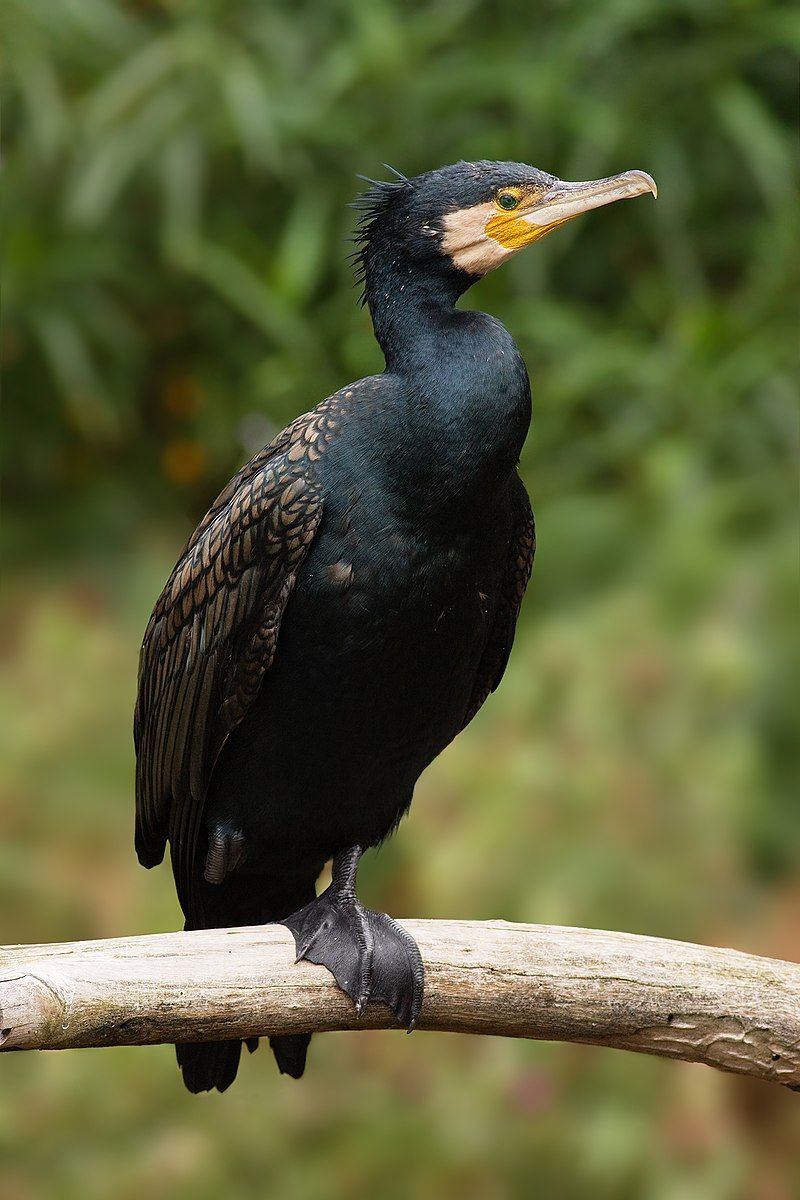
The great cormorant, also known as the black shag or away in New Zealand, is a species of seabird that has been seen in many regions of the world. Its scientific name is Phalacrocorax carbo, and it is a member of the cormorant family.
This species is found in many countries, including New Zealand, Australia, India, and the Northern Hemisphere. In New Zealand, the great cormorant is known as the black shag or kawau. In the Northern Hemisphere, it is known as the great black cormorant.
In Australia, it is referred to as the black cormorant. In India, it is known as the large cormorant. The great cormorant is a large bird, typically reaching a size of up to 85 cm in length and a weight of up to 3.5 kg.
Its feathers are predominantly black, with a white or pale yellow patch on the face or throat. It is an aquatic bird that lives close to the sea, lakes, rivers, and estuaries. It feeds primarily on fish, which it catches by diving into the water.
The great cormorant is a widespread species with a stable population.
It is found in many places around the world, from the northern hemisphere to the southern hemisphere, and its habitat range extends from the coasts of Europe and North America to the coasts of Africa, South America, and Australia.
| Kingdom | Animalia |
| Phylum | Chordata |
| Class | Aves |
| Order | Suliformes |
| Family | Phalacrocoracidae |
| Genus | Phalacrocorax |
| Species | P. carbo |
6. Squacco Heron
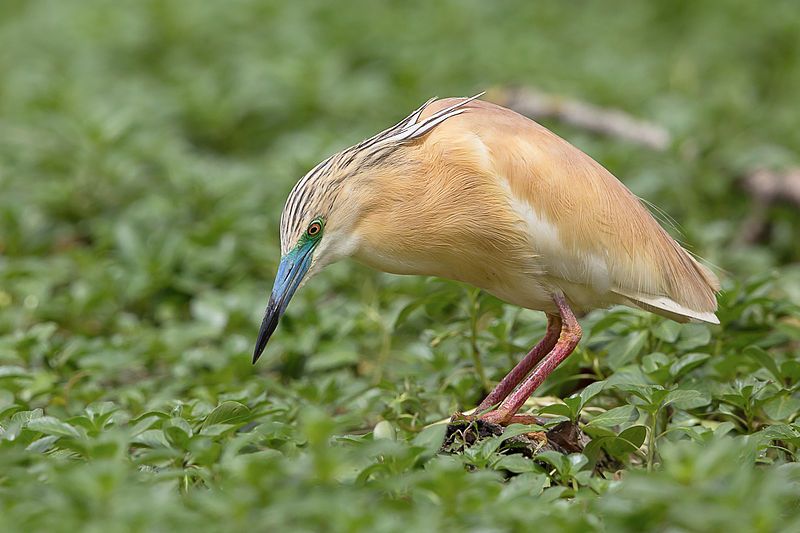
The squacco heron is a wading bird native to the Old World. It is of medium size, measuring 44-47 cm long with a body length of 20-23 cm and an 80-92 cm wingspan. These birds are found in various habitats, including wet grasslands, swamps, and marshes.
They breed in southern Europe and the Middle East in the spring and summer months. They feed on small fish, crustaceans, frogs, and insects. They have long necks and large eyes, which help them spot prey easily. They are usually found in small groups or pairs.
They have a characteristic blue-gray coloration with white belly and chest. They often stand still in shallow waters, waiting to ambush their prey.
| Kingdom | Animalia |
| Phylum | Chordata |
| Class | Aves |
| Order | Pelecaniformes |
| Family | Ardeidae |
| Genus | Ardeola |
| Species | A. ralloides |
7. Great Crested Grebe
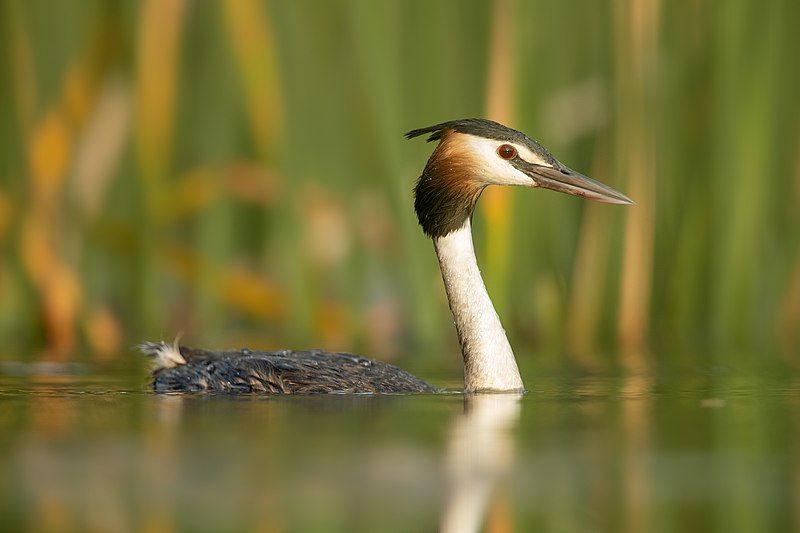
The great crested grebe is a bird species found in freshwater bodies worldwide. These birds have a distinctive long, thin neck, a crest of feathers on their heads, and striking dark and light markings on their feathers.
They are renowned for their elaborate courtship display, which begins with the male and female facing each other, with their heads bowed low and their wings slightly spread.
The male then performs a number of movements, such as shaking his head, stretching his neck, and scissor-kicking his feet. He may also make croaking calls to attract the female’s attention.
If the female is interested, she will join the display by shaking her head, dipping her beak, and flapping her wings. This display is often accompanied by a variety of vocalizations, including croaking, whistling, and cackling.
The male and female will swim together, with the male leading the way as they search for a suitable nesting site. The great crested grebe is iconic, and its elaborate courtship display is a sight.
| Kingdom | Animalia |
| Phylum | Chordata |
| Class | Aves |
| Order | Podicipediformes |
| Family | Podicipedidae |
| Genus | Podiceps |
| Species | P. cristatus |
8. Spotted Crake
The spotted crake is a small waterbird of the family Rallidae, a group of small to medium-sized waterbirds that includes rails, crakes, coots, and gallinules.
The scientific name of the spotted crake is derived from Venetian terms for small rails, which indicates its close relationship to the rail family. The spotted crake breeds in marshes and sedge beds in temperate climates across Europe and Western Asia.
During the breeding season, the spotted crake typically nests in a dry location in the middle of marsh vegetation. They will lay anywhere from six to fifteen eggs during the nesting period. The spotted crake is an important species for wetland conservation.
Wetlands are vital ecosystems that provide various important services to people and nature. A healthy wetland environment provides clean water, filters pollutants, supports wildlife, and provides recreational opportunities for people.
Without the spotted crake, wetlands risk losing some important benefits.
| Kingdom | Animalia |
| Phylum | Chordata |
| Class | Aves |
| Order | Gruiformes |
| Family | Rallidae |
| Genus | Porzana |
| Species | P. porzana |
9. Spur-Winged Lapwing
The Spur-winged Lapwing is a species of wading bird belonging to the Charadriidae family, which encompasses various larger waders. It is thought to be the same bird species the Greek historian Herodotus mentioned in his writings.
Herodotus wrote about a trochilus bird, which was thought to have a symbiotic relationship with the Nile crocodile. This relationship involved the bird cleaning the crocodile in exchange for the crocodile providing the bird with protection from predators.
This relationship has not been proven scientifically, but it is often mentioned in discussions of the ecology of the Nile crocodile. The Spur-winged Lapwing is a beautiful bird with a large, black-tipped crest and a bright white breast and back.
It is found in parts of Africa and is commonly seen around wetlands and rivers.
| Kingdom | Animalia |
| Phylum | Chordata |
| Class | Aves |
| Order | Charadriiformes |
| Family | Charadriidae |
| Genus | Vanellus |
| Species | V. spinosus |
10. Black-Throated Loon
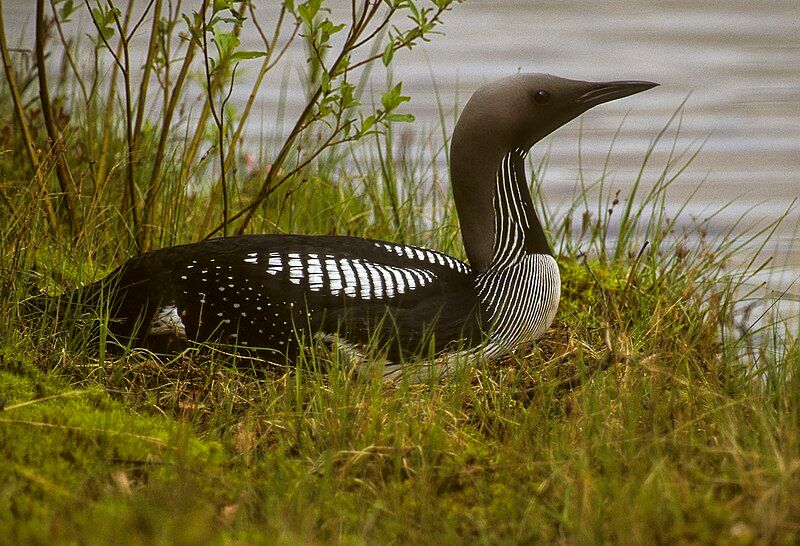
The black-throated loon is a migratory bird species that can be found in the northern hemisphere. It is also known as the Arctic loon or the black-throated diver.
It breeds in freshwater lakes during the summer, mainly in northern Europe and Asia.
It is a distinctive bird with a black throat, white underparts, and a black crown. The back and wings are greyish-black, and the bird has a long, thin bill.
The black-throated loon is usually seen in small flocks as it migrates from its breeding grounds to its wintering grounds.
It feeds on fish, aquatic insects, and other small invertebrates. It can be found in marine waters in the winter, including estuaries and bays.
The black-throated loon is an important species for conservation efforts, as its numbers have declined due to habitat destruction and climate change.
| Kingdom | Animalia |
| Phylum | Chordata |
| Class | Aves |
| Order | Gaviiformes |
| Family | Gaviidae |
| Genus | Gavia |
| Species | G. arctica |
11. Red-Throated Loon
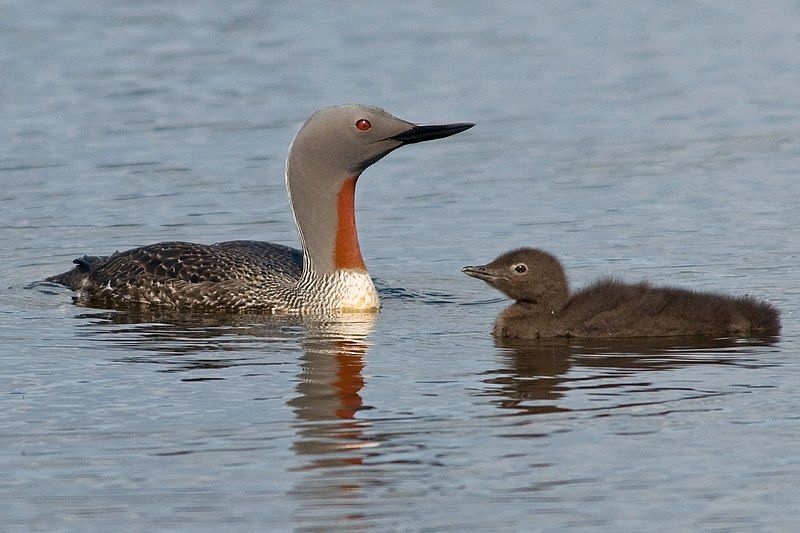
The red-throated loon, also known as a red-throated diver, is a migratory bird found in the northern hemisphere. It is the most widely distributed species in the loon or diver family, with its main breeding grounds located in the Arctic regions.
During winter, the red-throated loon migrates south to spend its time in the northern coastal waters. This bird species has adapted to live in both terrestrial and aquatic environments, as they can be seen swimming in the water and walking or running on land.
They have many habitats, including freshwater lakes, coastal wetlands, rivers, and streams. The red-throated loon has a distinctive red throat, which sets them apart from other species of loons or divers.
They also have a black and white speckled back, wings, and white belly. They have webbed feet, which they use for swimming and diving. The red-throated loon is a powerful flier capable of traveling long distances, and they are known for their loud, eerie calls.
This bird species plays a vital role in the Arctic ecosystem, as they are a keystone species and help maintain the balance of the environment.
| Kingdom | Animalia |
| Phylum | Chordata |
| Class | Aves |
| Order | Gaviiformes |
| Family | Gaviidae |
| Genus | Gavia |
| Species | G. stellata |
12. Glossy Ibis
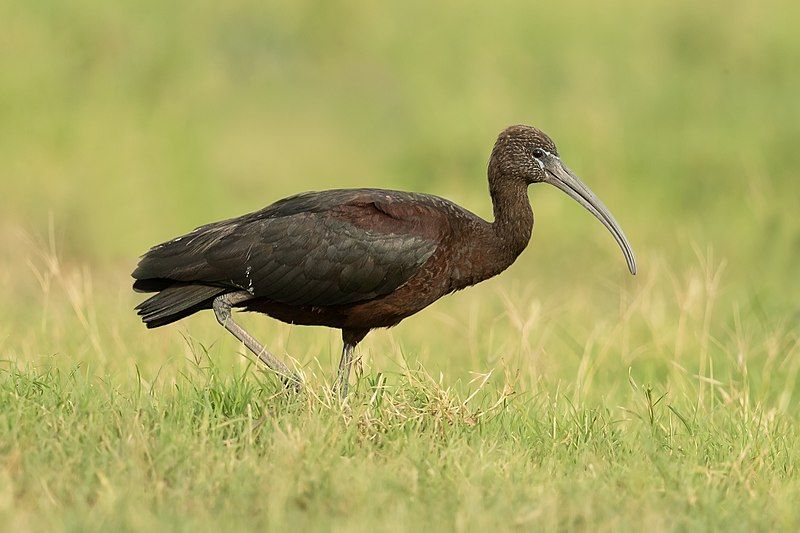
The glossy ibis is a species of water bird belonging to the order Pelecaniformes and the ibis and spoonbill family Threskiornithidae.
These birds are easily recognizable by their distinctive curved bills, which give them their scientific name, derived from the Ancient Greek word plegados and the Latin falcis, meaning “sickle”. This refers to the shape of the bill curved like a sickle.
The glossy ibis is a medium-sized bird, typically with brown, black, and white plumage and a long, pointed bill. They have long legs and a long neck and can be found in wetlands, marshes, flooded fields, and shallow lagoons.
They feed on insects, crustaceans, other aquatic invertebrates, small fish, amphibians, and reptiles. The glossy ibis is a widespread species found in Europe, Africa, Asia, and the Americas.
In some areas, it is considered a pest, as it can damage crops and other agricultural products.
| Kingdom | Animalia |
| Phylum | Chordata |
| Class | Aves |
| Order | Pelecaniformes |
| Family | Threskiornithidae |
| Genus | Plegadis |
| Species | P. falcinellus |
Conclusion
The birds of Mersin are an integral part of the city’s natural environment. They have been around for centuries, providing a beautiful and unique connection to the city’s history and culture.
They have adapted to the urban environment and now play a vital role in the ecosystem.
From the small passerines to the large raptors, the birds of Mersin provide a fascinating insight into the diversity of life in the region.
As the city continues to grow, it is important to protect the birds of Mersin and ensure that their habitats are preserved for generations to come.